PROJECT 4 Structure
Exercise 1 The structure of the human body work in sketchbooks
I looked at a a painting Picasso made in 1910 of Ambroise Vollard and a graphite drawing of the same person 5 years later. In the 1910 painting Picasso is immersed in his formulation of Cubism – seeking cones, spheres and other geometric forms that underlie the natural appearances. The graphite drawing is in a conventional representational style.
On the Momo website I found a series of 4 drawings (etches were made) Picasso did of Vollard – he completed it in a single day in 1937. (Gallery label from Picasso: Variations and Themes, March 28–September 30, 2010)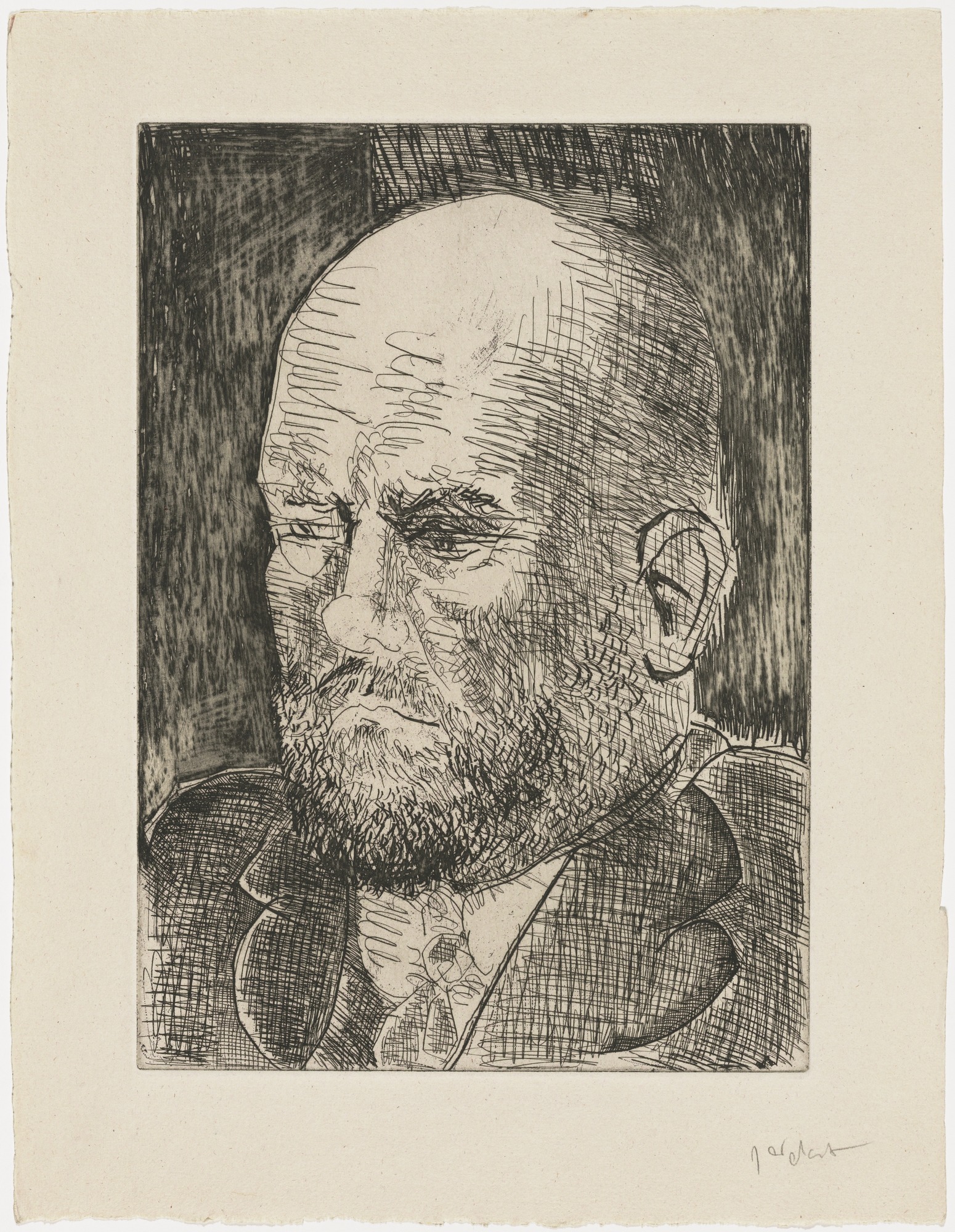
In these etchings one can admire the use of line.
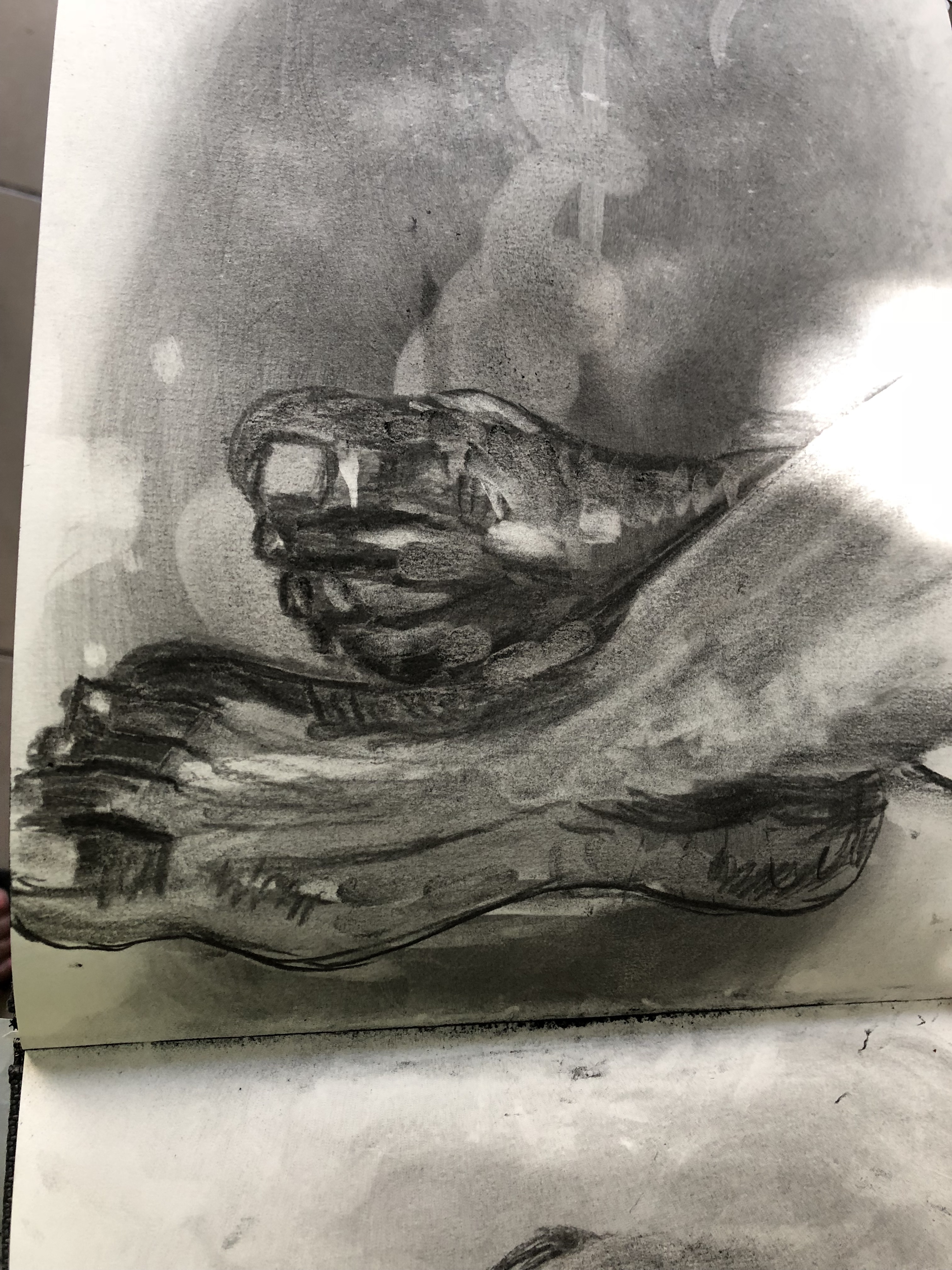
Exercise 2 Three figure drawings – use different tools, materials and supports. Work on A2 or A1 size and spend between half and one hour on each of the 3 drawings
Standing
A Line drawing with charcoal, smeared with burnt umber acrylic paint
Seated

I used a charcoal drawing I did in a figure drawing session and applied acrylic burn umber with a scraper over the drawing. I then did a drawing with pastels onto it, in order to give form and structure to the quick underdrawing.
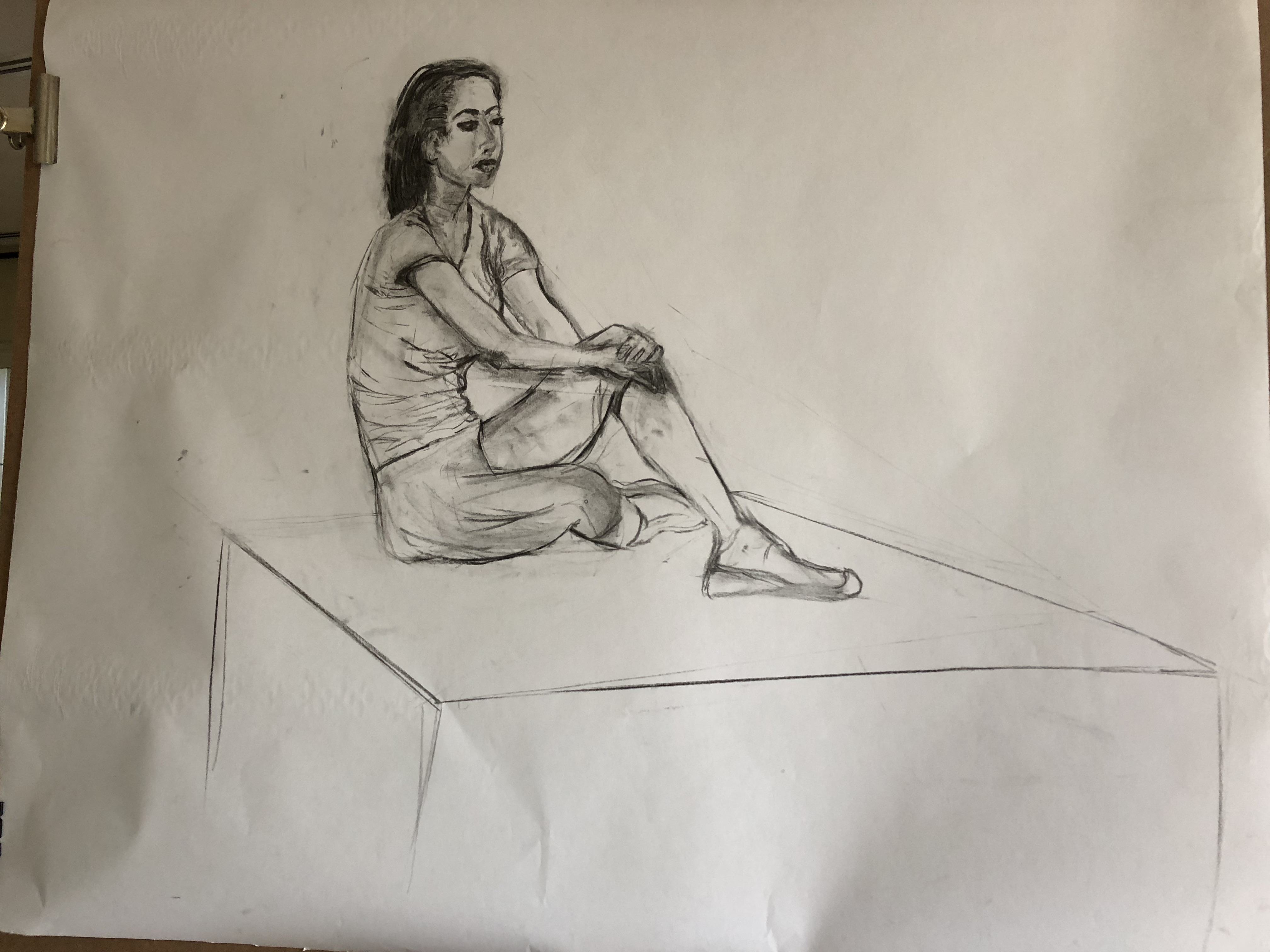
Lounging
I did a drawing in my sketchbook whilst looking at the video of an OCA tutor on drawing a lounging figure.
I decided to work loose and draw a figure sitting on a couch. I started off with a charcoal sketch, added ink and then decide to wash it with acrylic ( quinagruidine) I added more charcoal and pastel to the drawing.
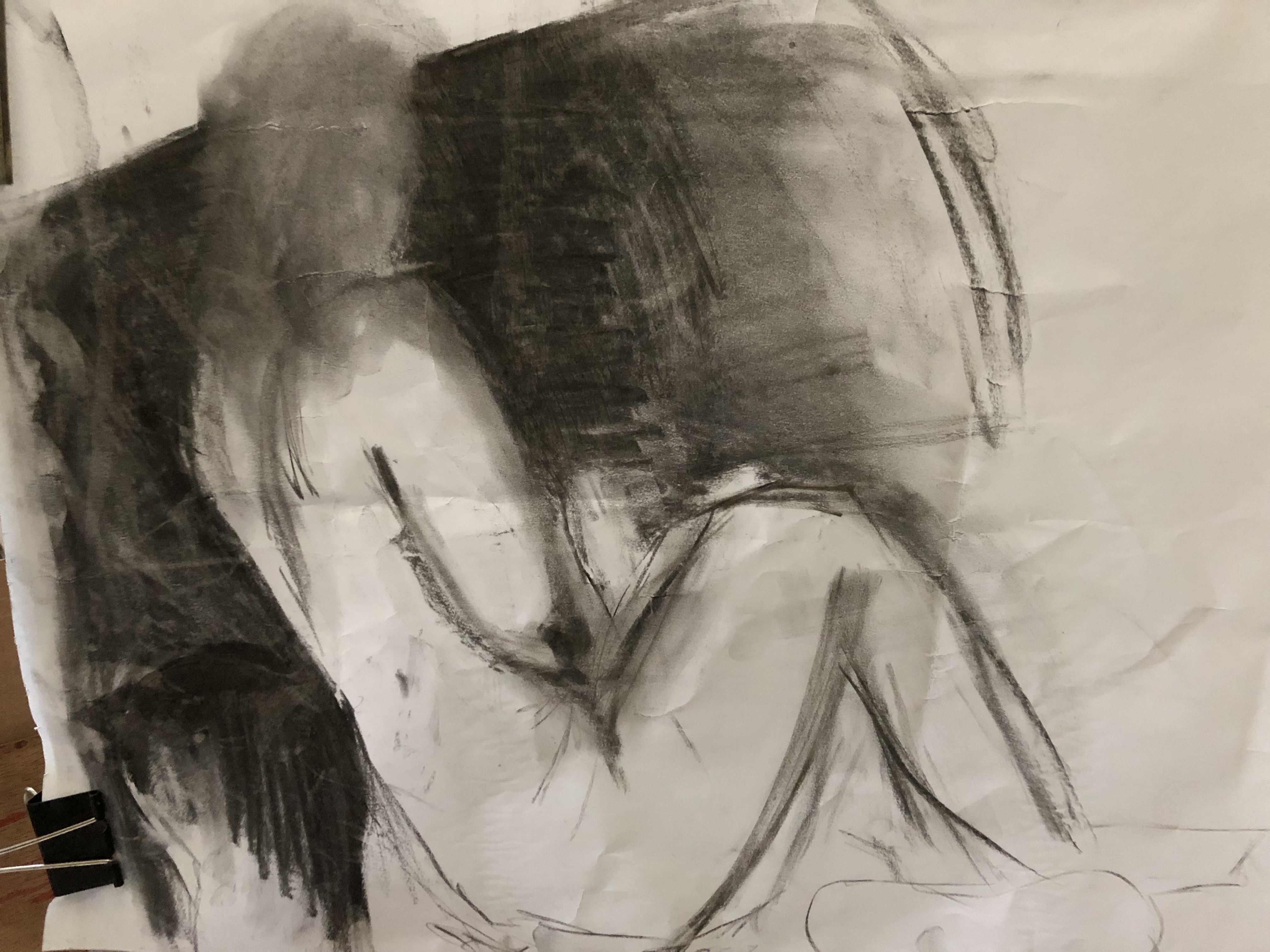

( My tutor suggested I look at this experiment again – the faded head and my idea of my own ageing process.


My lounging figure is from the same model (seated) in this exercise) I started with a small 9 A4) pencil drawing then did the final drawing with Derwent charcoal blocks ( black and white) and focussed on the lines and form.

The pencil sketch was softened with a paper stump and then I first used white ink, which could not show, I then used black ink and dipping pen. I tried to water down the ink for shadows and tonal effect – think this is something to explore more.
This was a longer drawing.

Small quick drawing of a lying figure done at figure drawing class in Dubai, 27 October 2018
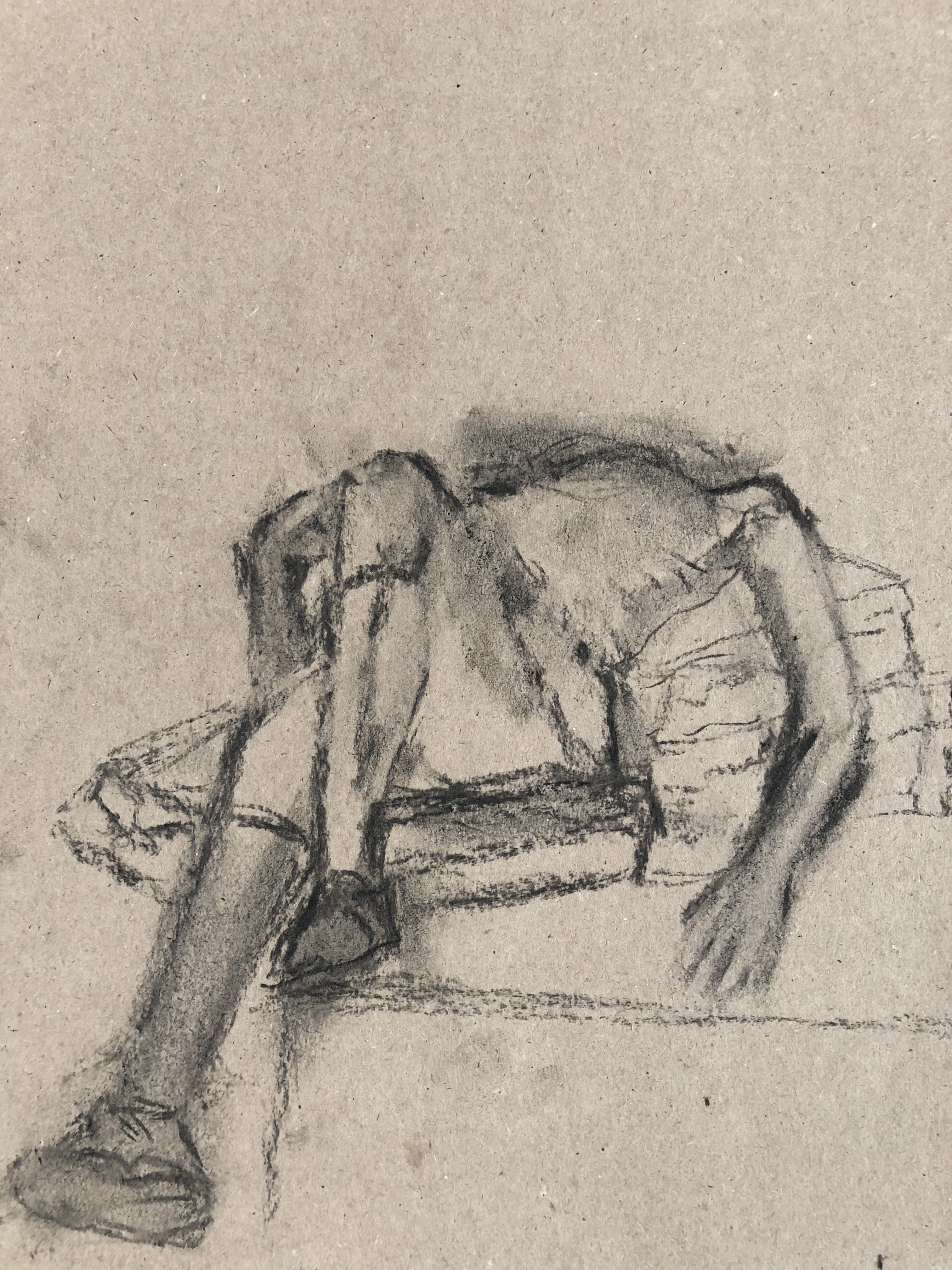
I did the same drawing on a bigger sheet of newsprint paper, using charcoal.
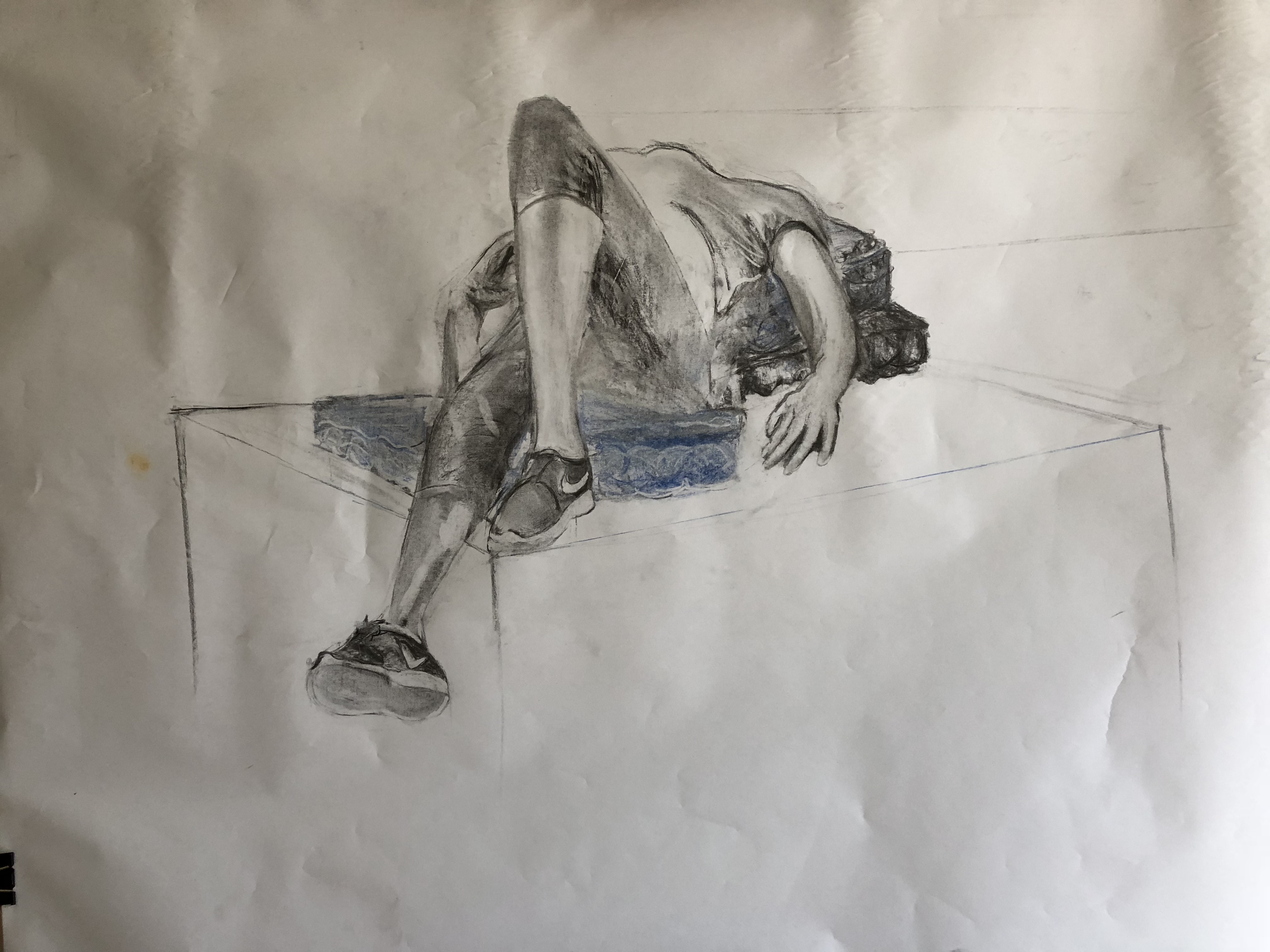
Review the completed drawings
I had the opportunity to do a tutored figure drawing class in Pretoria, South Africa (June 2018) – this is great, as I have not been drawing figures for the last few months. I started with short drawings and then worked on big sized paper. The drawings varied from 1 min poses, to 20 minutes, except for the last, longer drawing. I took photos of the model (seated) to do extra work at home, as I new my drawings should show other materials and I also felt I could push the initial drawings by experimenting further. The short poses was really difficult – took time to get use to drawing and looking for gesture. I find it takes time for me to integrate the pose I see as well as the beauty in the model I would like to represent. I see the sketches as studies which could develop further – if the opportunity arises to work regularly with a model. I realise the value of keeping sketchbooks of these drawings and will try to keep this practice up.
I enjoyed the seated model drawing as it felt as though I was sculpting the body with the pastels overlaying the initial charcoal drawing. The first drawing of the lounging model was hard to to, but as I started a self portrait with my face looking upwards and have not been happy with my attempts, I felt I should at least try. This is the rough drawing – short pose of 20 minutes on newspaper print., which I considered to through away – hence the state of the drawing. I have given up on achieving anything better in this case. I think I was so focussed on getting the technical things, like foreshortening in place, that the enjoyment of drawing what I actually see was lost on me. The lounging model, 2nd drawing was easier to do and I did a pencil drawing to start with and found the pose easier to represent. I did however made her back too long.
The drawings I did in the October group session in Dubai was added due to the fact that I considered focussing on finding basic form and then working on the actual drawing – I used lines to mark the shape of the figure, although this is not a good view. It shows more foreshortening and bending of the body. I prefer drawing on bigger paper – I feel I get uptight and concerned with detail, rather than finding the basic structure of the object/figure. I find it takes time to relax and draw with ease – I still use to dark lines in the beginning and the softer charcoal helps me to use my fingers to soften and find gesture in the form of the figure.
I found the following interesting material on Tate website, a reclining nude done by sir William Coldstream:

“Coldstream wanted to develop an objective manner of painting, transcribing onto canvas precisely what he saw before him. This supposed objectivity was most clearly shown by his technique of measuring the distances between different points on the body and marking them on the canvas with red paint. But these marks may also function as active parts of the image. For example, the clusters around the model’s nipples seem to inject an erotic undertone.Coldstream’s desire for precision and objectivity meant that he rarely decided a painting was finished, but simply stopped when he reached a deadline.”
Gallery label, May 2007